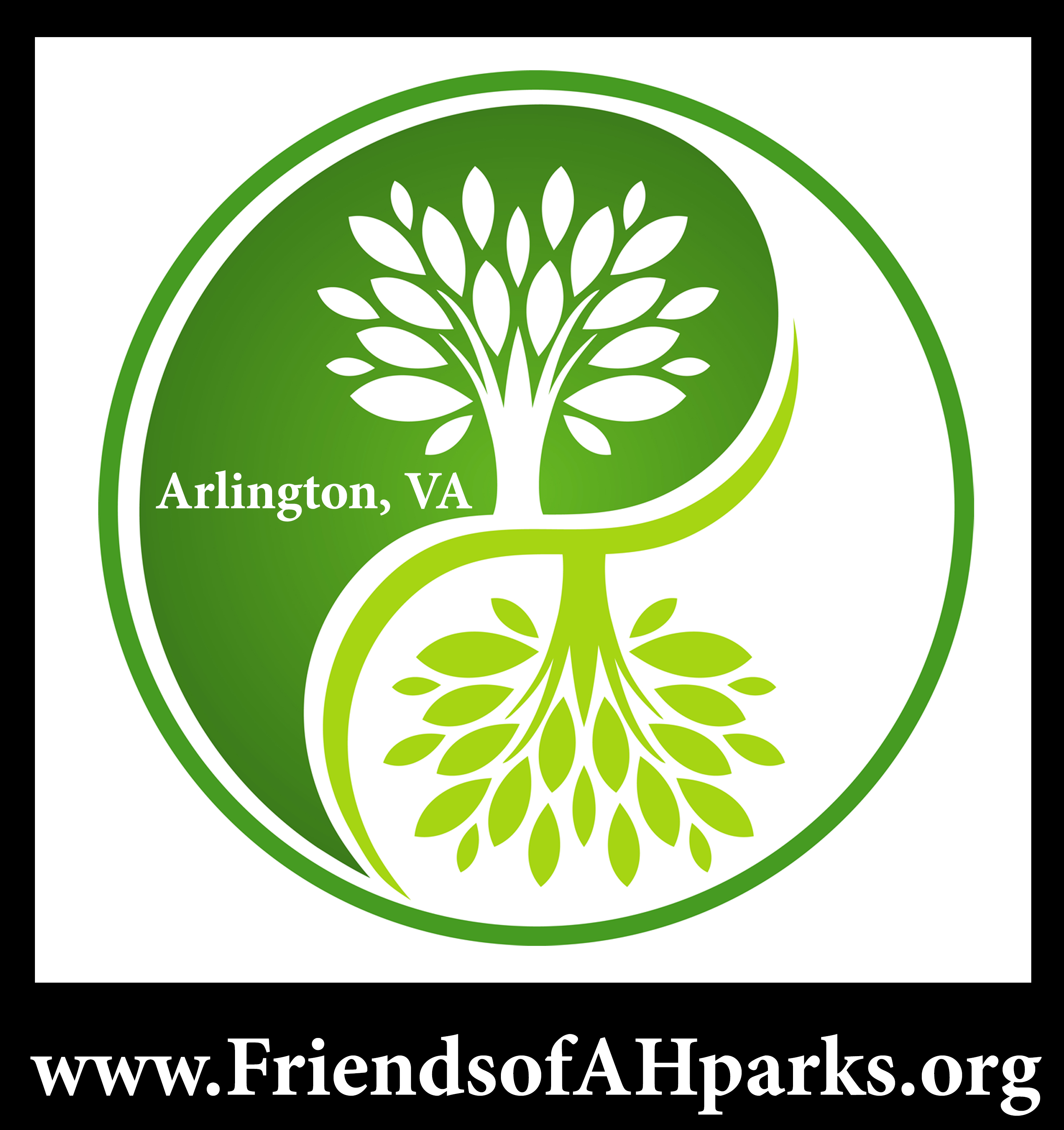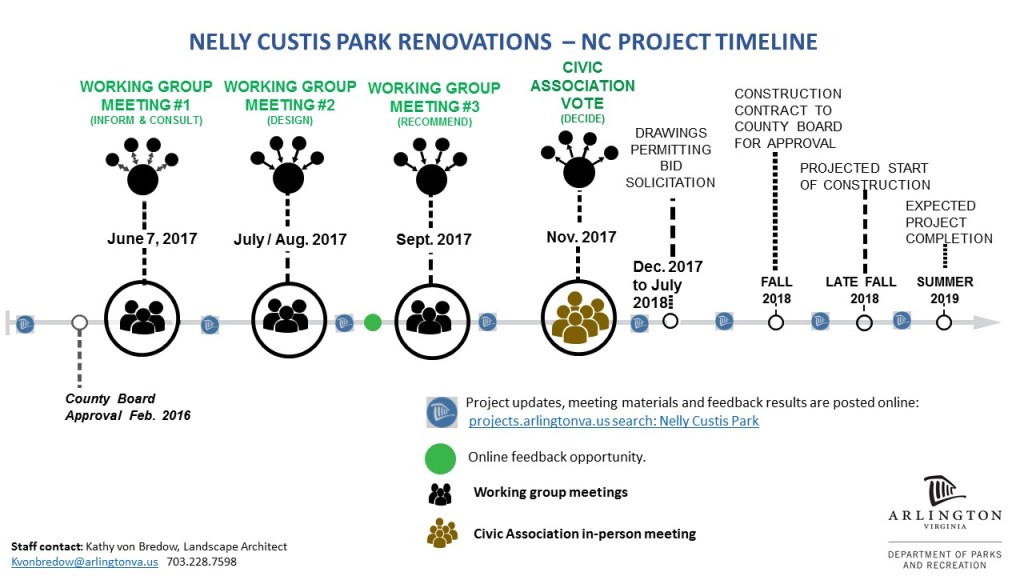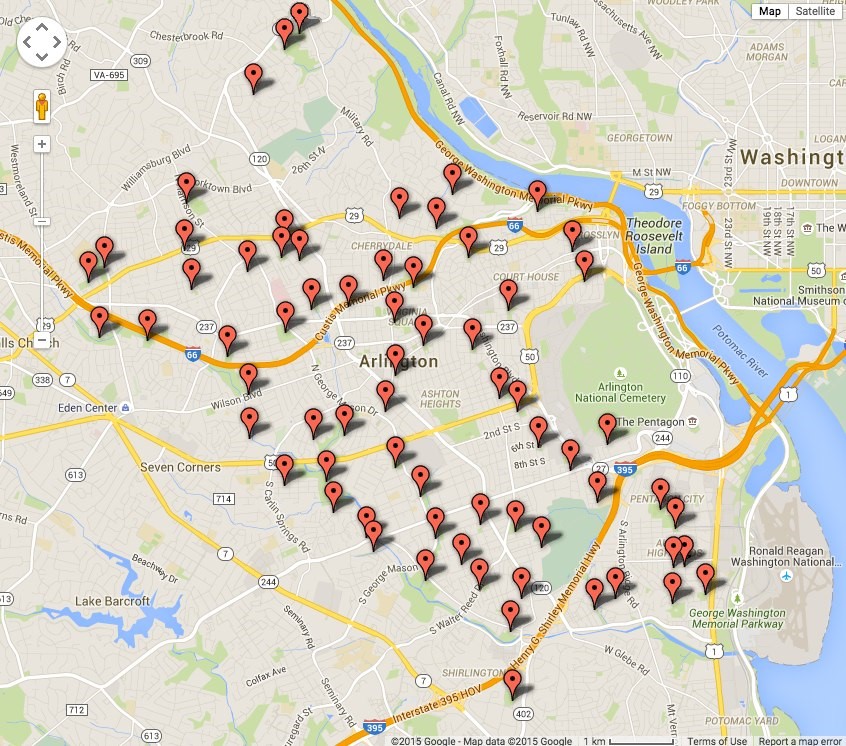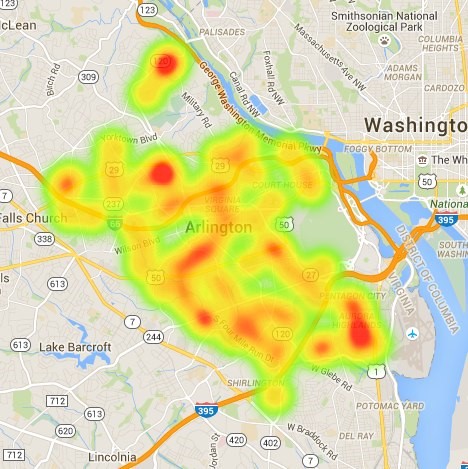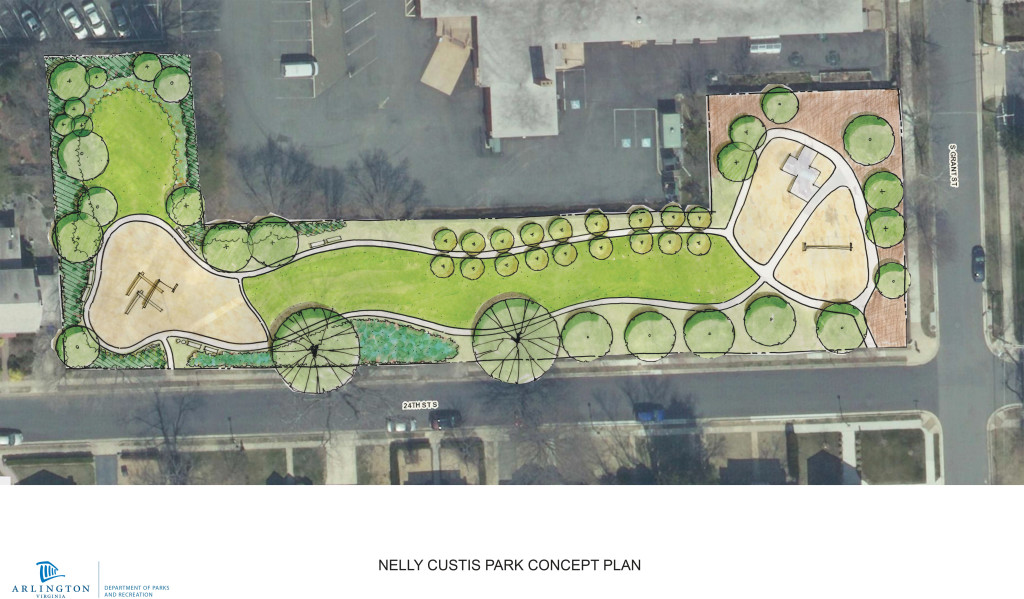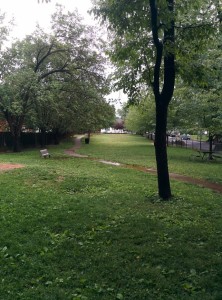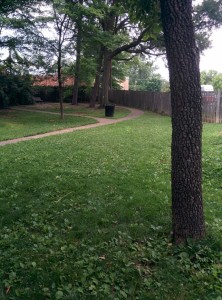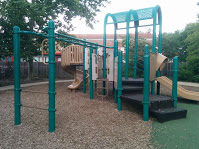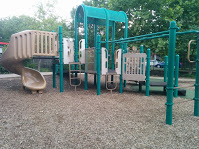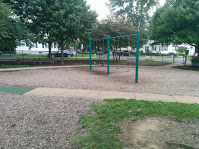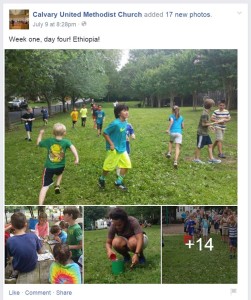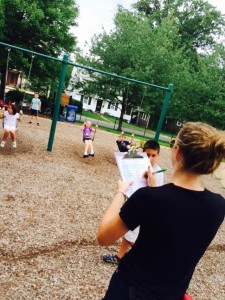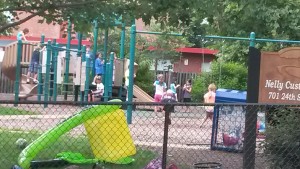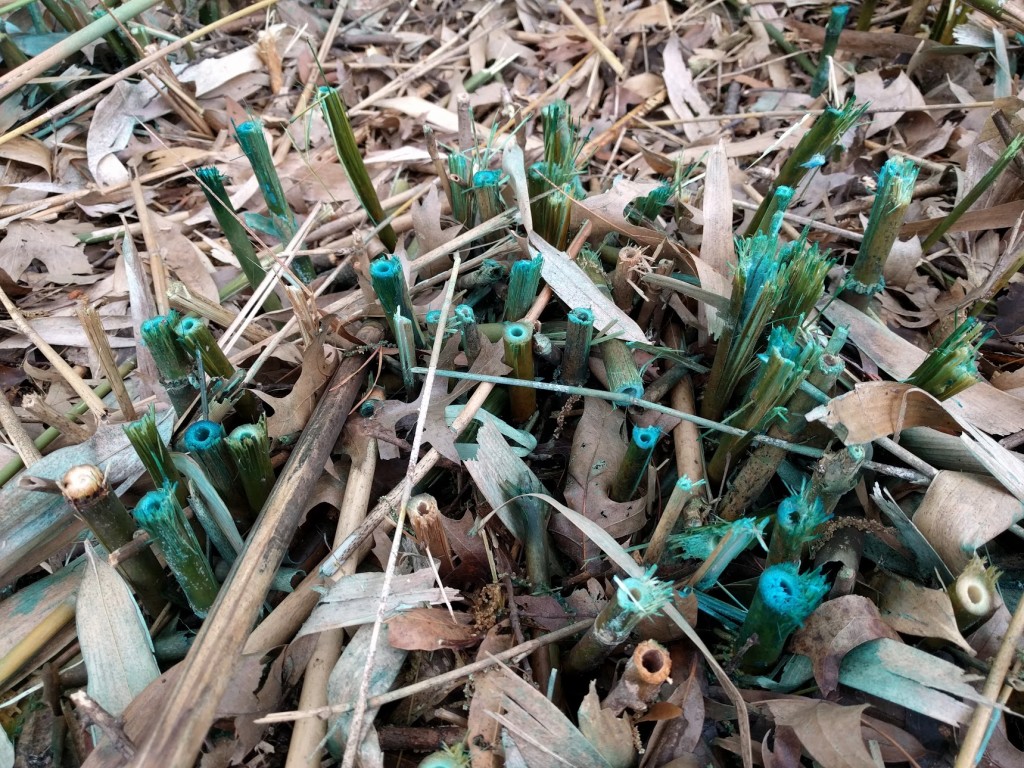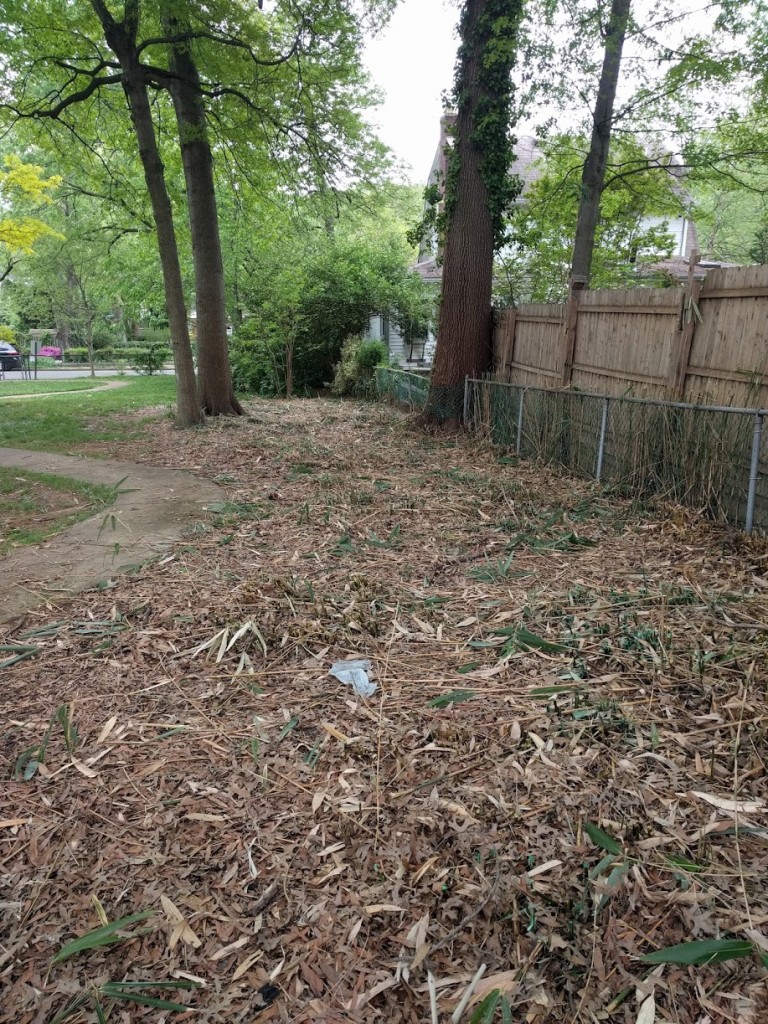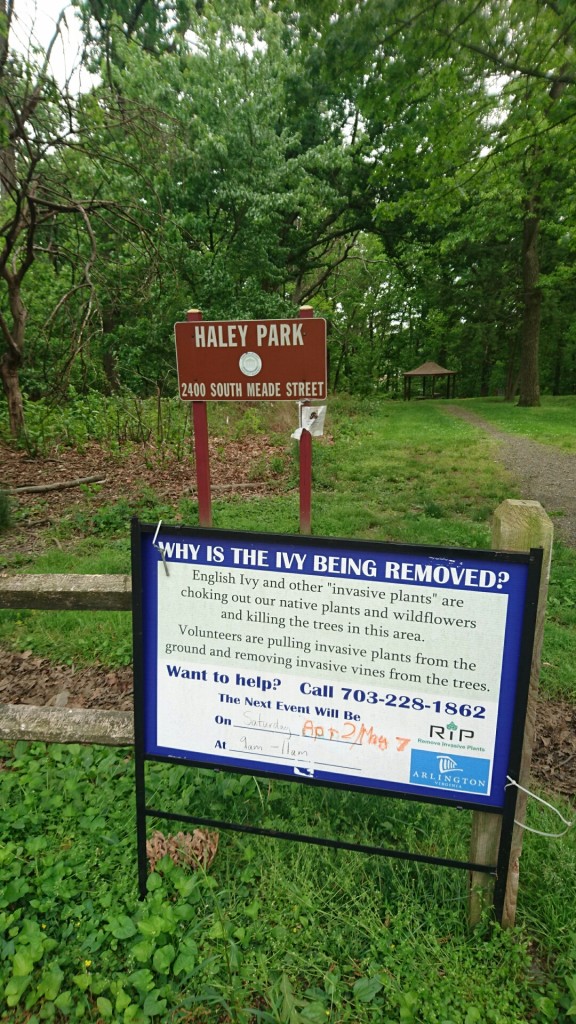(701 S 24th St)
UPDATE: County Apology to the Community for the Nelly Custis Park Project.
On December 8, 2016 at the Neighborhood Conservation Advisory Committee’s (NCAC) Funding Round meeting, county staff read the public apology to the committee.
On behalf of the County Manager’s Office and the Department of Parks and Recreation, regarding the Neighborhood Conservation project at Nelly Custis Park we’d like to apologize to the community for a process that did not meet Arlington’s vision to be adiverse and inclusive community where people unite to form a caring, learning, participating, sustainable community in which each person is important. County staff made statements that were inappropriate and inconsiderate. The engagement within the community was not at the level that Arlington County expects to deliver to their residents. We are sorry. We are especially sorry to those residents who participated actively and voiced concerns and input, but felt left out of the process. We will strive to ensure that all members of the community are a critical part of the project moving forward.
The Friends of Aurora Highlands December/January newsletter is the official response to the apology to the community.
Peter’s Take: Toward a New Model of Arlington Civic Engagement
 Peter’s Take is a weekly opinion column. The views and opinions expressed in this column are those of the author and do not necessarily reflect the views of ARLnow.com.
Peter’s Take is a weekly opinion column. The views and opinions expressed in this column are those of the author and do not necessarily reflect the views of ARLnow.com.
On December 8, Jane Rudolph, Director of Arlington County’s Department of Parks and Recreation (DPR), issued a formal apology on behalf of DPR and the County Manager’s Office. At issue were the ways in which Parks staff interacted with residents last year over a proposed additional playground at tiny Nelly Custis Park:
County staff made statements that were inappropriate and inconsiderate. The engagement within the community was not at the level that Arlington County expects to deliver to their residents. We are sorry. …We will strive to ensure that all members of the community are a critical part of the project moving forward.
Discussion
Kudos to Jane Rudolph and Mark Schwartz for their forthright apology.
On the very same day, Gillian Burgess, writing in the Progressive Voice column, observed: “Arlington has the opportunity to be a national leader in developing a modern model of community engagement.” I agree.
What Happened
The County’s apology concerned a proposal to spend nearly $1M of Neighborhood Conservation bond funds to construct a playground at a .8 acre park–the 3rd playground in a little over one block.
The proposal was highly contested for several reasons — less green space, proximity to nearby homes, need and equity. Why, some asked, did Aurora Highlands need a 6th playground when 16 neighborhoods have none?
Adjacent neighbors were not notified. Follow-up meeting notifications didn’t occur. From the beginning, it appeared that Parks staff was giving undue weight to some voices, including daycare and commercial users.
Numerous community members suspected that there was something wrong with the community engagement process. This led to a January 9, 2016 Freedom of Information Act (FOIA) request to the County. Emails and other documents the County produced in response confirmed these suspicions.
The documents produced showed that:
- County staff failed to follow Arlington’s code of ethics,
- Committees failed to follow their own process guidelines,
- Persons with special interests undisclosed in the NCAC approval process worked nearly exclusively with staff, and
- Numerous efforts were pursued (both publicly and with staff) to exclude, discredit and even falsely campaign against residents including stakeholders, working group members and active civic volunteers.
Lessons Learned
The Nelly Custis Park project illustrates the serious issues that Arlington faces relating to community engagement. Three other examples are the WRAPS process in western Rosslyn, the fencing of a Bluemont Park baseball diamond and the Williamsburg fields lighting proposal.
The serious community engagement issues highlighted by all these recent controversies include:
- Lack of a needs assessment including demographic information,
- Prematurely deciding that a proposed project is needed at all,
- Properly defining the nature of the proposed project and alternatives to it,
- Providing adequate public notice to close-by residents and all stakeholders,
- Need for properly designed community surveys,
- Undue influence exercised by organized special interests, and
- Lack of fair and neutral stewardship by County staff.
Conclusion
The Community Facilities report analyzed why Arlington needs to do better in this area. The County’s recent hiring of Bryna Helfer as its Assistant County Manager for Communications and Public Engagement is encouraging. But the Nelly Custis controversy indicates how much new thinking, processes and leadership are needed in order for Arlington to develop a new model of civic engagement. The County apology indicates progress.
Feedback from article
Of the abundant feedback, here are some of the most up-voted and quotes from the most relevant.
“I want to applaud Mark Schwartz and Jane Rudolph for their integrity in acknowledging the mistakes apparently made in connection with the Nellie Custis situation described in this column. I also would never have imagined seeing such an acknowledgement from the County and hopefully this is indicative of a sea change in how the County will handle community engagement going forward. There have been other indications that this may be the case going forward. I also want to applaud the members of the community who had the tenacity, and I think bravery given community pressures, to pursue these issues, undoubtedly in the face of stonewalling and denial by some involved. However, it should not require the filing of a FOIA request to prompt review of similar situations raised by concerned citizens in the future. The types of behavior and shortcomings in community processes highlighted in the article have been noted and commented on in the past by many of us involved in certain other processes. I would hope that the County would take other public steps to ensure that there will indeed be a needed cultural change in how staff consistently conducts public processes going forward.”
“Let’s accept that the apology was based on a thorough review and that there were real issues here. What can we learn that helps us move forward? Let’s get back to the discussion we were having here about how to do better in civic engagement. Peter was pointing out areas where the process needs work, I won’t repeat those or the specific questions I listed last night. Two points.
More fundamentally, when are we allowed to discuss the EQUITY issues involved in which neighborhood gets what and whether the NCAC or Parks or other County Dept should ever do a needs assessment? Will the POPS effort to look at parks needs really help by requiring this? Right now the best organized NCs/civic associations get almost all the $$$ from these special bonds, and they have also gotten the most from the regular budget processes. Take a look at the distribution of playgrounds and at the special new features in parks in North and South Arlington. But what about the 16 neighborhoods with NO PLAYGROUND (many with higher % of young children than the one in question), or old and worn-out ones like ours? The weaker neighborhoods need more technical assistance in outreach and participation from staff and higher priority for these kinds of amenities. How do we build civic engagement that includes their needs too? Or is this, as a County Board member once suggested, just a $12 million exercise in play money to keep certain groups busy and happy?
Let’s separate wants from needs. In this particular example, of course some in this particular playground-rich area “wanted” an additional playground if they could get it (and I’d like a Lexus RX Hybrid for Christmas), and they nearly scored in the spring 2015 funding round. All playgrounds are nice, right? No matter that it would have been the 2nd one in this tiny park (in late 2015, after all the push-back, this was reluctantly scaled back to improving/updating the existing playground and drainage for $800K+), or the 3rd if you included the tot park on the very next block. Doesn’t this matter?
And let’s figure out if procedure counts. Does it matter if civic associations do a NC plan? Apparently only if you want it to. No one has mentioned that neither proposal (additional playground or improving existing) was in the relevant NC plan; in fact, other needs that were identified there were bypassed without questions from either NCAC or PRD. It’s supposed to matter, maybe too much so. By contrast, in November, the NCAC was told that a PRD staff member informed another neighborhood (Columbia Heights) trying to save a beautiful wooded area from a developer that if the need for additional park land wasn’t in their 10-year-old NC plan, they could not access to other special bond funds for park expansion. Honestly, we can learn a lot here and we should do better. And we talked seriously that night about amending all the NC plans to say yes, many of neighborhoods may need more green space as density grows.”
Aurora Highlands Demographics and County Public Playground Maps
As of the July 2015, county data has Aurora Highlands is tied for #1 currently with playgrounds in Arlington County (5 playgrounds in 7 parks.) Children make up 9% of our population based on the most recent census, one of the lowest in the county by percentage. The other neighborhood that Aurora Highlands is tied for first place for playground areas with is Arlington Forest. 26% of their population is children. If Aurora Highlands triples its total child population from 152 children per playground to 456 children per playground (while not adding any new playgrounds), that would be considered “average” compared to the rest of Arlington County.
Here is a map of all parks with playgrounds using data from the DPR web site (http://parks.arlingtonva.us/find-a-park/). In most areas these are pretty well spread out.
Here’s the same map showing the results slightly differently,
with “hot spots” showing areas with higher concentrations of playgrounds.
Read the full report of Aurora Highlands and other neighborhoods demographics and playground facilities:
Nelly Custis_Demographic and playground maps 7_1_2015
June 2015
HISTORY:
This tiny park is on land rescued from the sale of Nelly Custis elementary school. The east side, a former parking lot, has been developed into a multi-use playground for children 5-12, and is handicapped accessible. The west side is passive, natural green space with trees and grass. The sides are connected by a shady path with loops at each end, a measured approximately 1/10 mile.
The current project proposed through Neighborhood Conservation initiated and supported by the Aurora Highlands civic association, would destroy the multi-use green space to add another playground for 5-12 year-olds removing a wild persimmon tree. Other very large mature trees were shown as being removed in the original concept plan too. This would be the third playground in a little over a block, and would remove the last centrally located green space in the neighborhood. Sixteen other neighborhoods in Arlington have no public playgrounds and many more have only one or two according to Dept. of Parks & Rec. This would be the 6th in our civic association and the 8th in less than ½ mile! It would limit use to only children of appropriate age and ability. The existing green space is great for all ages and uses including many families who are advocates for keeping the park natural and green for their kids to have a park where they can run and play in open space. And for decades this park has been used by neighbors to walk their dogs and enjoy the quaint natural parts of this park.
West side of the park is used by many neighbors of all ages, where construction of third playground has been proposed with a tricycle loop connecting the two playground sites together.
Current playground equipment being used by 5-12 year olds from a church summer camp
UPDATE October 31, 2015
The project scope as voted upon is better defined and more reflective of community input than earlier this year, thanks in large part to the incredible effort of FoAHP volunteers that pushed for greater community involvement.
At the October 14th meeting of the Aurora Highlands Civic Association, Department of Parks and Recreation presented a revised proposed scope and concept plan for the Nelly Custis Park Improvement NC Project. Those present voted in favor of moving forward with the revised scope.
The following scoping language was presented by DPR and approved:
- Correction of the existing drainage problems
- A stormwater engineer would be contracted to address the existing run-off problem. This could potentially include rain gardens, underground retention facilities and additional plantings
- Removal of invasive species
- Existing highly invasive bamboo would be eradicated through a multi-year process
- Improve circulation for accessibility and park use
- Existing circulation paths would be reviewed for ADA compliance and brought up to code.
- Additional school age play equipment
- Includes “natural looking” play elements for 5-12 year olds
- Play area would be located on the east side of the park adjacent to the existing playground
- Increased park shade with tree canopy plantings
- New site furnishings
- Includes park signage, benches and trash/recycling receptacles
The project will now be presented to the Neighborhood Conservation Advisory Committee (NCAC) in December and, if approved, then to the County Board early next year. If approved, the project will move into the design phase with the community expected to have additional input during this phase.
The project scope as voted upon is more reflective of community input than earlier this year, thanks in large part to the incredible effort of FoAHP volunteers that pushed for greater community involvement.
Given the extensive community input provided, FoAHP would have expected the scope to be even clearer and include many items frequently raised during scoping meetings such as removing the truck gate and asphalt driveway pad, removing asphalt chunks in grass, moving trash/recycling receptacles to entrances, or clearly acknowledging the desire to maintain green space. The FoAHP steering committee still has concerns that some elements of the revised plan may be unnecessary or out of scale for Nelly Custis Park. DPR has assured the community that there will be an opportunity to address any concerns during the design phase. FoAHP has plans to closely monitor the process and implementation of this project.
For additional information on the park improvement process, visit the Arlington County Projects & Planning page for Nelly Custis Park.
Update March 2016
Funding approved
Funding for the Nelly Custis Park Neighborhood Conservation project was approved by the county board at the February 23rd recessed meeting.
This project now moves into the design phase, in which the county will perform site surveys, more detailed analysis, create design plans, and obtain bids from contractors. This process is likely to take up to a year before the neighborhood will have an opportunity to review and approve the final plans.
Acknowledgement from County Board
Community members from all over Aurora Highlands, some in small and others in large amounts, have put a great deal of thought, time, and energy into analyzing not only this project but the Neighborhood Conservation (“NC”) process as a whole and did so respectfully, thoughtfully and informatively.
We thank the County Board for acknowledging community members through their statements at their recessed meeting that community members raised “substantive concerns” and “fundamental questions with respect to substance and process,” about the Nelly Custis Park project and the Neighborhood Conservation process.
We are also very appreciative of their encouragement of further discussion about NC projects in Arlington and for encouraging participation especially by those who have already put in a great deal of thought, analysis and time into this project.
Thank you, County Board members for this acknowledgment!
Reaffirming FoAHP mission
Throughout this last year there has unfortunately been inaccurate information distributed about the positions of the Friends of Aurora Highlands Parks group. The positions, goals and mission statement have always been made available publicly on our website and newsletters for anyone to see the positive contributions being made and efforts to help ensure that our neighborhood parks are inclusive for all ages and uses. Our contact information has always been available and we continue to welcome questions, suggestions, and feedback.
 FoAHP was created with the mission of finding the best ways to protect our natural spaces while accommodating both our existing diverse community and our growing population. By incorporating multipurpose green spaces alongside programmed areas, a wider population can enjoy our park resources, in keeping with our Neighborhood Conservation plan.
FoAHP was created with the mission of finding the best ways to protect our natural spaces while accommodating both our existing diverse community and our growing population. By incorporating multipurpose green spaces alongside programmed areas, a wider population can enjoy our park resources, in keeping with our Neighborhood Conservation plan.
FoAHP has always supported the fundamental improvements proposed for Nelly Custis Park and asked its supporters to actively participate in the scoping process and to say “YES” for the park improvements on the County survey. Certain elements of the project as originally proposed that are not part of our Neighborhood Conservation plan concerned many residents as unnecessarily changing the nature of this beloved park.
Fortunately, the “compromise” plan that was adopted is more reflective of community input than the original concept plan, thanks in large part to the incredible effort of FoAHP volunteers that pushed for greater community involvement.
If implemented as promised, this plans helps mitigate the reduction of general-use area and ensures that the west side of the park will remain quiet and passive and the play area will be a small extension of the existing playground.
Future work
Because the recent output of the scoping phase is not as detailed as what is often provided and many details about the extent of regrading, types of site furnishings, retaining walls, plantings, shade, natural screening, ADA accessibility changes, playground equipment size and safety zones are not yet known, we would expect the county to work with the neighborhood as these details are developed.
We stress that continued participation will be necessary during the design phase by the majority of the community who care about Nelly Custis Park, and who had already voiced concerns over the plan to add a new playground over the natural area at the west side and are still concerned that the “compromise” plan could encroach too far into the much needed and used open middle green space.
We hope that the proponents of adding more use-specific spaces will continue to respect this compromised version of the park plan about keeping the park inclusive for the whole community and inclusive of all resident voices.
May 2016
Update on Nelly Custis Park.
Surprise! Bamboo removed, sprayed with herbicide.
Sometime during the last week of April, the bamboo in the far western side of Nelly Custis was removed and sprayed with rodeo (glyphosate) as part of a multi-year process to eradicate the plants from the park.
Park neighbors reported being caught unaware as there was no specific notification to adjacent neighbors or regular users of the park. A small sign was reportedly placed near where the bamboo had been, with a small rope, for approximately 1-2 days. No other information anywhere in the park existed to warn park-goers of the spraying and the action that was taking place. Neighbors have expressed concern that there was not better advance notice including exact dates, nor how the county would ensure the safety of children, pets or wildlife as the chemicals sat open and without containment.
Some residents who were fortunate enough to have signed up for email alerts from the county did receive a brief notice that action would be taken some time in April:
“The County will hire a contractor to remove invasive species in April 2016. The first step is to remove the bamboo in the northwest potion of the park. Since invasive species removal can be a multi-year process, the sooner its removal begins the better as new plantings cannot be added to the park until invasive plants are eradicated. The process is as follows:
- Cut and Treatment of Arrow Bamboo – Contractor will use power equipment to cut the bamboo stalks and apply a glyphosate-based herbicide to the stumps.
- Remove Bamboo Corpses – Contractor will immediately remove bamboo stalks from the site.
- Foliar Spray of Regrowth- Over time, depending on the regrowth, contractor will spray herbicide to the bamboo leaves that regrow. This may require several years of follow-up treatments.”
Many in the neighborhood have expressed a strong desire to retain the bamboo because it has been a favorite natural play area for kids for decades and because it appeared to be well maintained and contained. According to the county, the bamboo is a species “Arrow Bamboo”, which is not on the Virginia invasive species list but is on the county’s “Early Detection and Rapid Response” list.
The Virginia Invasive Plant Species List can be viewed here.
No discussion or substantive details about what will actually happen in this space took place during the extended discussion last year prior to approving this Neighborhood Conservation project. The county “will discuss potential new plantings within Nelly Custis Park during the design phase” of the Nelly Custis Neighborhood Conservation project. There is no time frame for when this would occur.
As a Neighborhood Conservation project, driven entirely by the community, the conversation and communication by County staff with the residents should be on-going. The Aurora Highlands Civic Association has reached out to the Department of Parks and Recreation to try to find ways to improve communication with the county and county contractors performing work in our parks, which has been a recurring issue for some time.
For questions or comments, please contact Shannon Early searly@arlingtonva.us Dept. of Parks and Recreation staff lead for Nelly Custis Park.
EXAMPLE OF HOW COMMUNICATION TYPICALLY OCCURS WITH RESIDENTS WHEN ACTION IS TAKEN IN OUR PARKS. Photo of Haley Park near Oakridge Elementary School.
